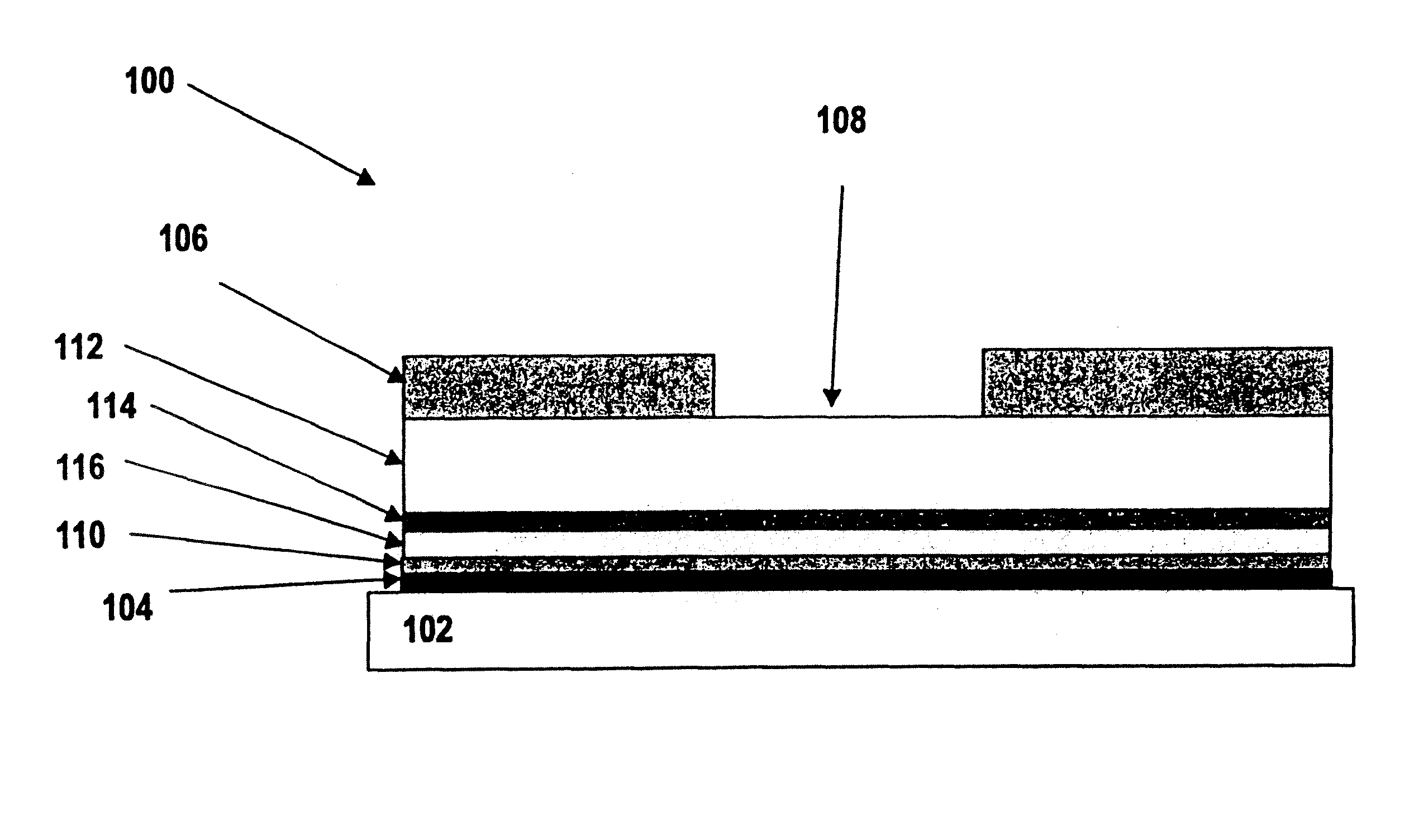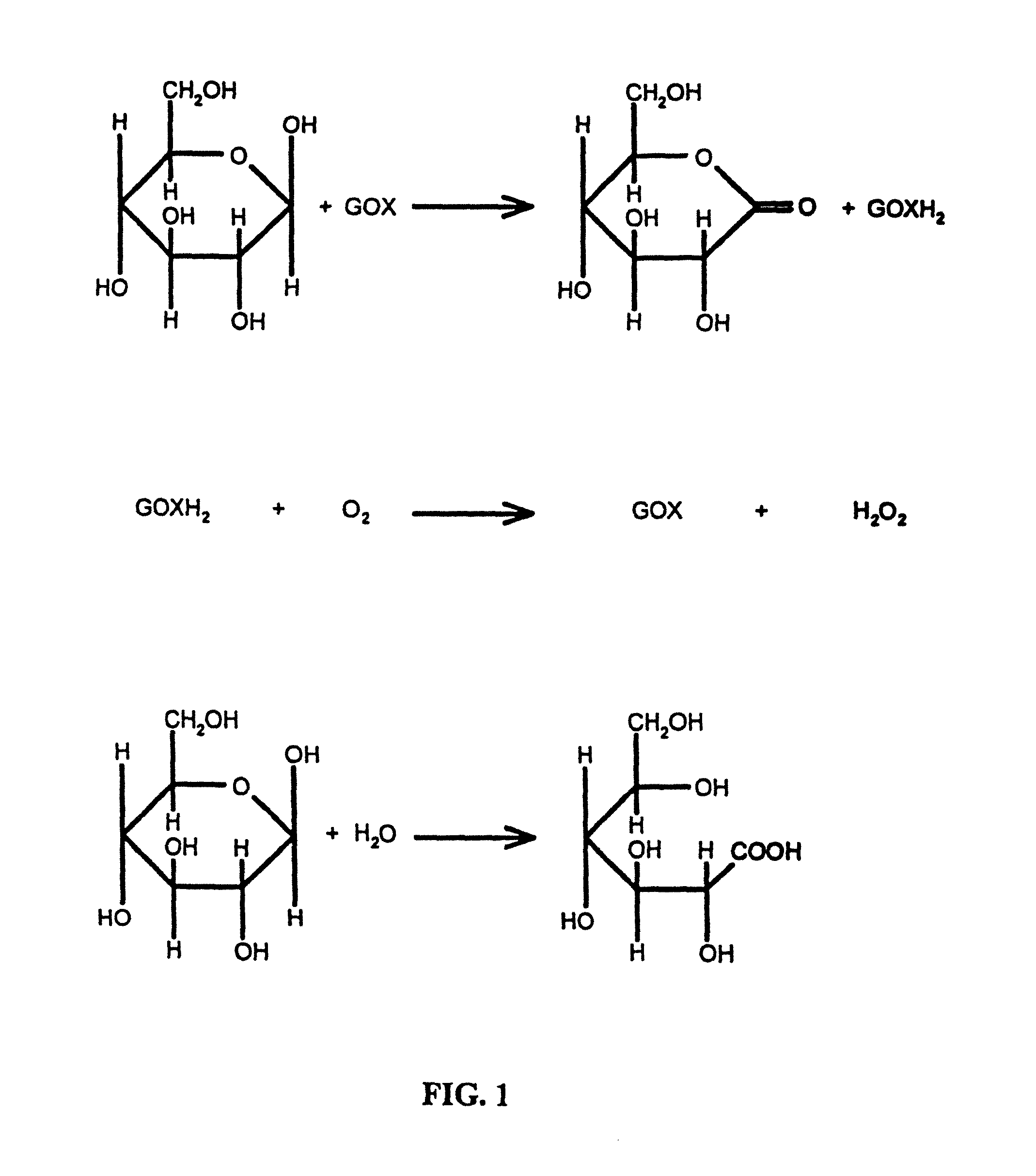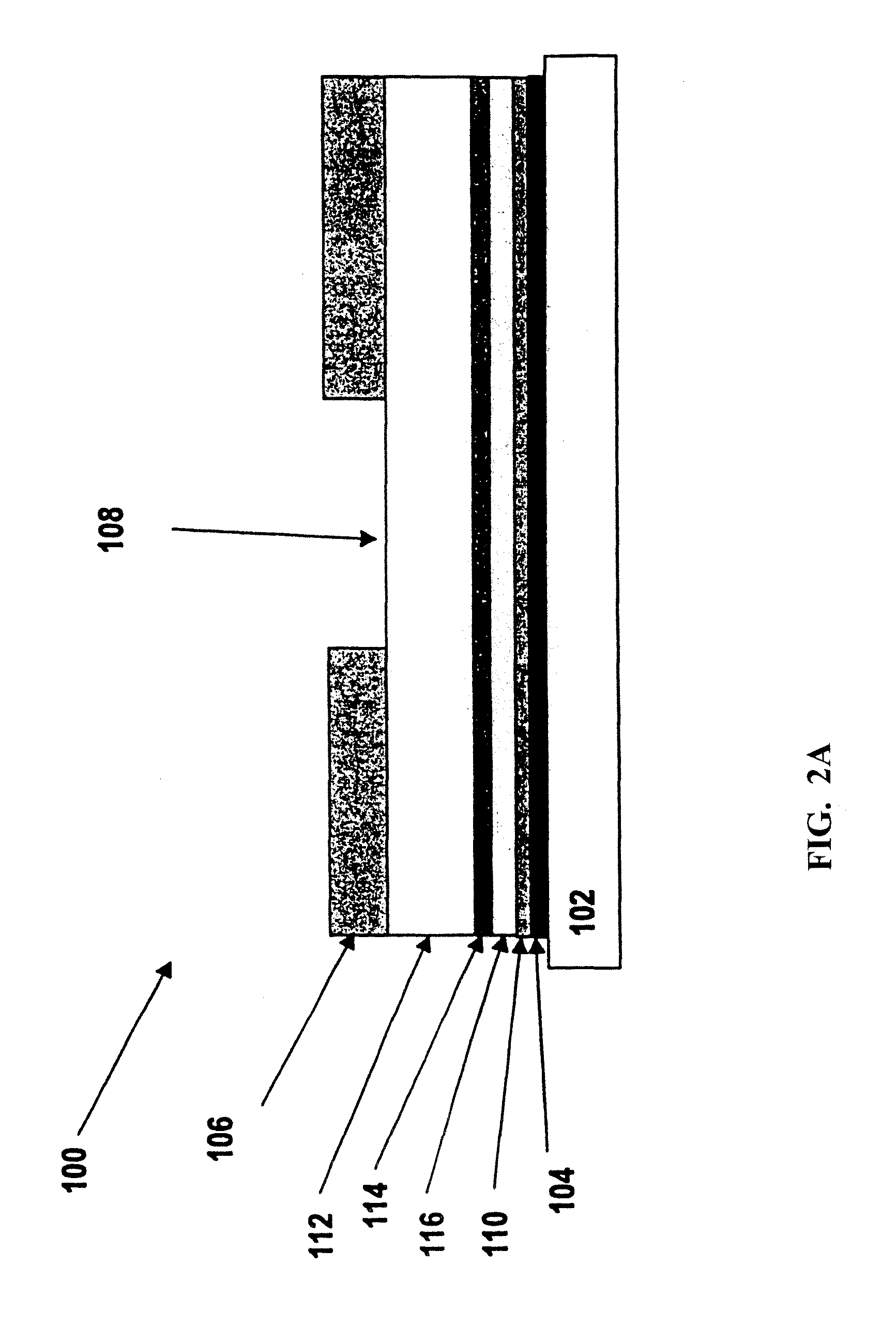Analyte sensors comprising blended membrane compositions and methods for making and using them
a technology of analyte sensor and blended membrane composition, which is applied in the field of biosensors, can solve the problems of compromising the accuracy of sensor readings and the challenge of in vivo sensor development, and achieve the effects of enhancing in-vivo performance profile, good mechanical properties, and improving hydration profil
- Summary
- Abstract
- Description
- Claims
- Application Information
AI Technical Summary
Benefits of technology
Problems solved by technology
Method used
Image
Examples
example 1
Synthesis and Characterization of Illustrative Linear Polyurea / Polyurethane Polymers
[0166]The disclosure provided herein in combination with what is known in that art confirms that functional linear polyurethane / polyurea polymers can be made from a number of formulations, for example those disclosed in U.S. Pat. Nos. 5,777,060; 5,882,494; 6,642,015; and PCT publications WO 96 / 30431; WO 96 / 18115; WO 98 / 13685; and WO 98 / 17995, the contents of which are incorporated herein by reference. Certain of these polymers provide formulations useful as a glucose limiting membrane (GLM).
[0167]A standard GLM formulation used to make embodiments of the invention comprises:
[0168]25 mol % polymethylhydrosiloxane (PDMS), trimethylsilyl terminated, 25-35 centistokes;
[0169]75 mol % polypropylene glycol diamine (Jeffamine 600, a polyoxyalkyleneamine with an approximate molecular weight of 600); and
[0170]50 mol % of a diisocyanate (e.g., 4,4′-diisocyanate).
This standard GLM formulation and processes for i...
example 2
Synthesis and Characterization of Illustrative Branched Acrylate Polymers
[0172]The disclosure provided herein in combination with what is known in that art confirms that functional branched acrylate can be made from a number of formulations. In one example, the formulation is made using 9.60 g (40%) MMA (methyl methacrylate, Mw 100.12 Daltons); 8.40 g (35%) PDMS-M11 (polydimethyl siloxane monomethacryloxypropyl, Mw=1000 Daltons); 2.40 (10%) methoxy-PEO-MA (poly(ethylene oxide)methyl ether methacrylate, Mw=1100 Daltons); and 3.60 (15%) 2-DMA-EMA (2-(Dimethylamino)ethyl methacrylate, Mw 157 Daltons)
[0173]
TABLE AOther branched acrylate formulations canbe made with the following constituents:wt % ofwt % ofwt % ofwt % ofBatch #2-DMA-EMAMMAPDMS-M11PEO-MA2843-4-1B54535152843-4-2B48035172843-28-1252045102843-30-235204052-DMA-EMA = 2-(dimethylamino) ethyl methacrylateMMA = Methyl methacrylatePDMS-M11 = polydimethyl siloxane monomethacryloxypropylPEO-MA = poly(ethylene oxide) methyl ether met...
example 3
Synthesis and Characterization of Illustrative Blended Polymeric Compositions
[0196]The linear polyurethane / polyurea polymer used to make blended membrane composition embodiments of the invention comprised the “standard GLM” formulation shown in Example 1 above. The branched acrylate polymer (“GLM-acrylate”) used to make blended membrane compositions of the invention comprised the formulation of lot #3276-66-2 shown in Table B in Example 2 above. For the sensors comprising blended membranes that were produced and then used to generate the data as shown in FIGS. 4-6, the GLM / GLM-acrylate ratio=1 / 1 (by weight).
[0197]Art accepted processes were used for making the polymer blends. Basically, amounts of standard GLM and GLM-acrylate polymer were dissolved in THF (or THF / IPA) for few hours, then filtered with 1 micron filter before use according to standard methods for making a layered sensor. For example, the common concentration for spraying processes was 2-3% solid, and for spinning pro...
PUM
| Property | Measurement | Unit |
|---|---|---|
| temperature | aaaaa | aaaaa |
| temperature | aaaaa | aaaaa |
| weight % | aaaaa | aaaaa |
Abstract
Description
Claims
Application Information
 Login to View More
Login to View More - R&D
- Intellectual Property
- Life Sciences
- Materials
- Tech Scout
- Unparalleled Data Quality
- Higher Quality Content
- 60% Fewer Hallucinations
Browse by: Latest US Patents, China's latest patents, Technical Efficacy Thesaurus, Application Domain, Technology Topic, Popular Technical Reports.
© 2025 PatSnap. All rights reserved.Legal|Privacy policy|Modern Slavery Act Transparency Statement|Sitemap|About US| Contact US: help@patsnap.com



